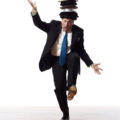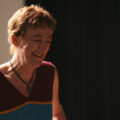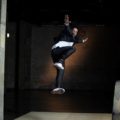After Sue Samuels, we talk with Tony Waag, tap dancer and artistic director of the American Tap Dance Foundation.
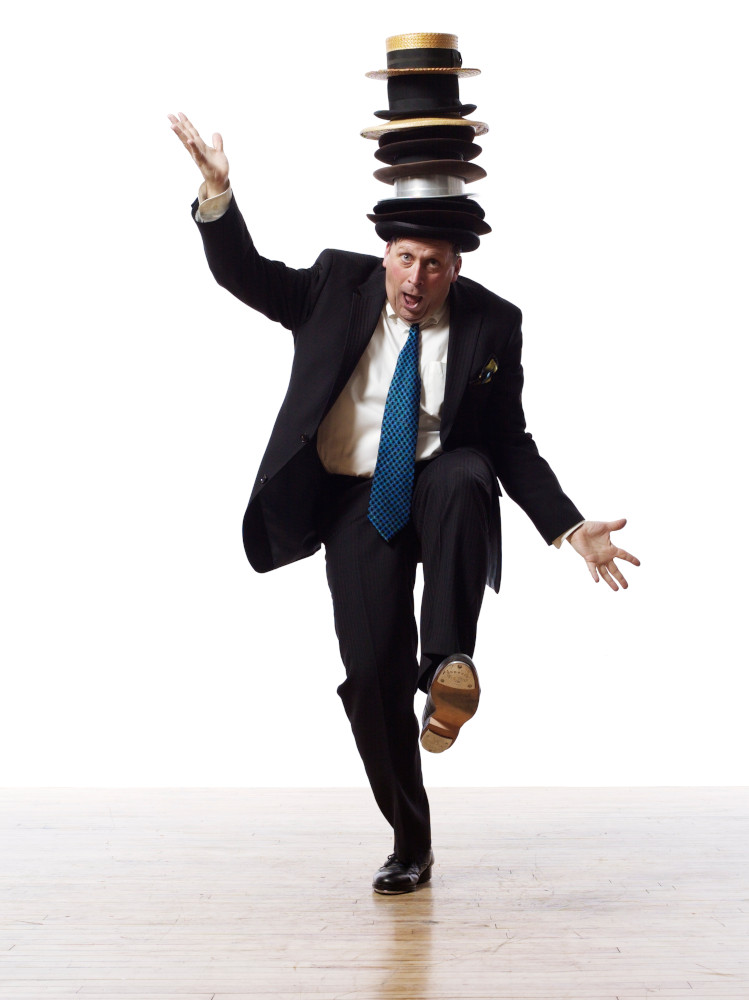
1. Photo by courtesy of Tony Waag, photographer Lois Greenfield.
Tony Waag is a tap dancer, director, producer, choreographer, and teacher.
He founded the American Tap Dance Foundation and he also created Tap City, the annual New York City Tap Festival.
As a performer and choreographer, Tony Waag has been featured in hundreds of concert, film, and television productions including appearances at the legendary Apollo Theater, the Kennedy Center for the Performing Arts, the United Nations, and PBS’s “Great Performances”. He created and staged the touring production of Thank You Gregory, a tribute to Gregory Hines.
In 2002, he created the first International Tap Dance Hall of Fame. He also created the annual Tap Preservation and Hoofer Awards, the Gregory Hines Youth Scholarship Fund, Rhythm in Motion, Tap it Out, and Tap Treasures.
In 2010, he opened the American Tap Dance Center in New York City, where he directs education and training programs. As a teacher and artist, he is well renowned and he taught and performed, among others, in Canada, Russia, Italy, Germany, and Singapore.
In 2014, Tony Waag received the Dance Magazine Award for his unique contributions to the dance field.
Hi Tony Waag, it is a great honour to have you as our guest on Tutto Mondo News.
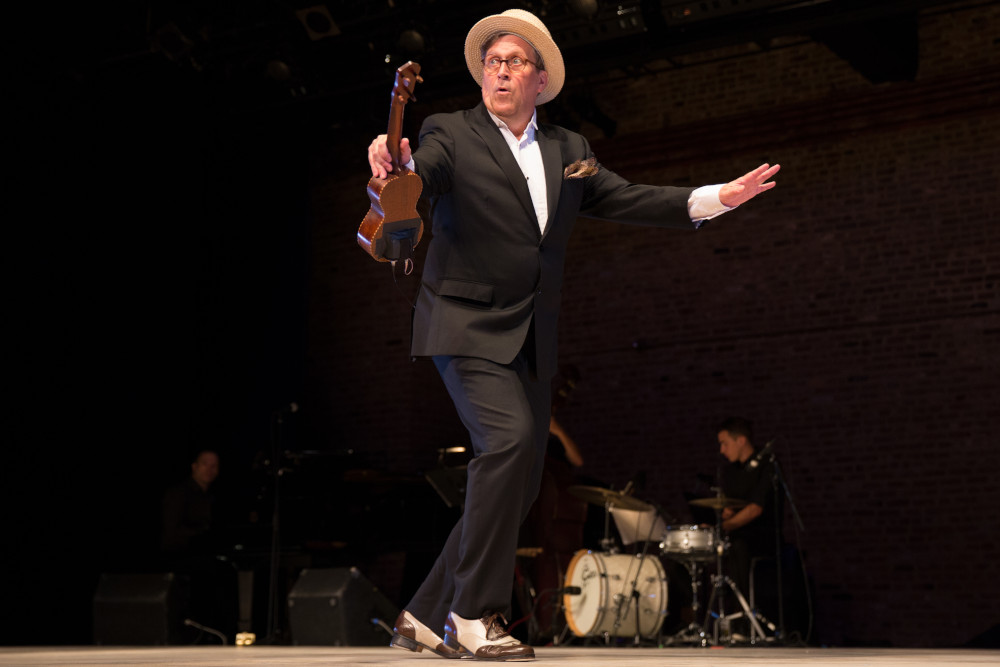
2. Photo by courtesy of Tony Waag, photographer Amanda Gentile.
What is tap dancing for you and what do you love about it?
«Well, it’s such a fascinating art form in that it’s there for anyone who wants it! You can be age 5 or 105 and tap dance. You can be black, white, pink or grey! You can be from Estonia! You can have one leg! You can weigh 350 pounds. You can be a highly trained artist and choreographer or you can just do it for the exercise. You can create your own style, you can improvise, you can mix it with other forms of dance, music, and electronics. I could go on and on! I love the variety and the fun of it. And its history is amazing and how it parallels the human experience! It addresses racism, sexism, ageism. I never get tired of it».
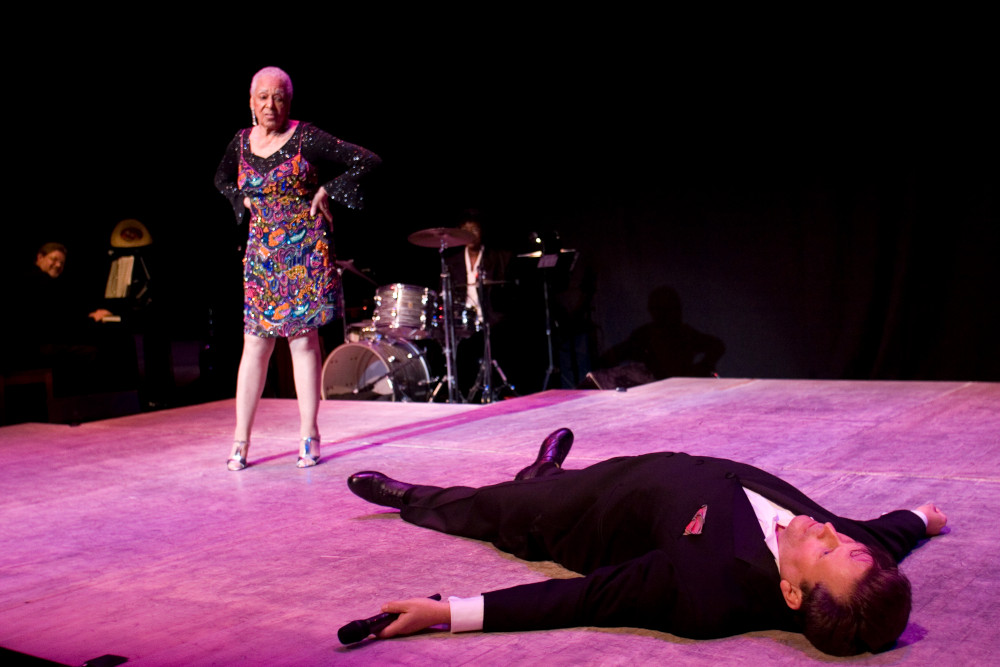
3. Tony and Mable Lee. Photo by courtesy of Tony Waag, photographer Debi Field.
Which was your favorite show to dance into during your career and why?
«I don’t think I can identify a “favorite”. Each experience has been SO different. I’ve done some real commercial work and then some really avant-garde stage projects. A real challenge was dancing a tribute to Donald O’Connor with him sitting right in front of me at Town Hall here in New York City. It’s certainly something that stands out. Definitely an important highlight. I did a great job. I also had numerous opportunities to dance with the late great Mable Lee. I think one of my favorite performances with her was one that we totally improvised».
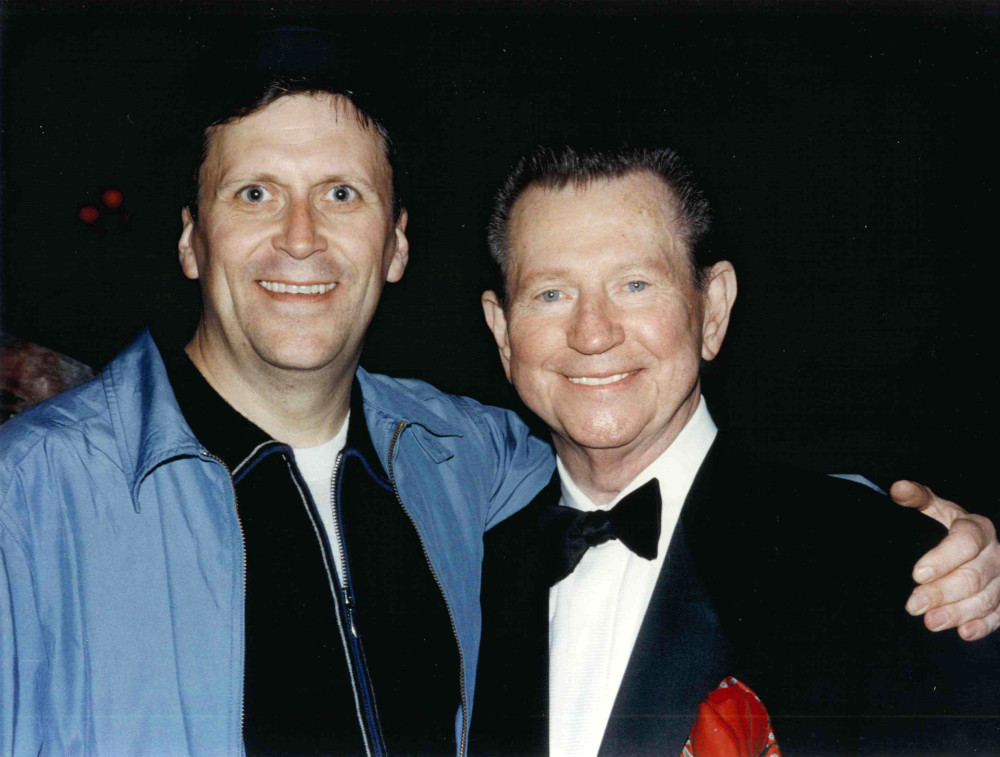
4. Tony and Donald O’Connor. Photo by courtesy of Tony Waag, photographer Julie Lemberger.
Tony Waag, do you have any favorite tap dancers from yesterday and/or today?
«Donald O’Connor, Ray Bolger, Dick Van Dyke, Buddy Ebsen, Hal LeRoy, Cookie Cook, Brownie Brown, I LOVE the eccentrics! Then of course Brenda, Honi, Ted Levy, Jeannie Hill, Michelle Dorrance, Caleb Teicher, I could go on here also».
From American Tap Dance Orchestra to American Tap Dance Foundation: which factors leads to this change?
«Well, the Orchestra was directed and choreographed by my mentor Brenda Bufalino and I was a featured dancer and the Executive director for the first 14 years or so. Then after touring the world, the ensemble sort of ran its course and eventually broke up. Meanwhile we started to do more educational programming so the name Orchestra didn’t fit anymore, plus I started Tap City so I became the artistic director and Brenda became a board member, then an advisor and now an artist in residence».

5. The American Tap Dance Orchestra. Photo by courtesy of Tony Waag.
What are the aims beyond Tap City, the annual New York City tap festival?
«I am currently working on creating a Center for Percussive Dance with a host of other dancers. There is a substantial need for appropriate space with good wood floors that percussive artists can use and feel welcome in. Out little American Tap Dance Center is just NOT big enough».
Let’s talk about this year’s Tap City festival. How was hosting it both in place and online?
«I’d say very complicated and its hard to determine what the outcomes were or are. I know a lot of people have been very complimentary, and thankful. I really did enjoy working on presenting a number of prerecorded events that got me deeply into editing footage that was presented on line».
Which are, in your opinion, the most important moments of this year’s festival?
«I’d say the only actual “in person” event which we held at Father Duffy Square/Times Square. It was called Tap it Out. In partnership with the US Postal Service we unveiled the 5 new Tap Dance stamps that just came out. I was very proud to be asked to promote them and I think its an indication that the world is starting to finally recognize how important this American art form is».
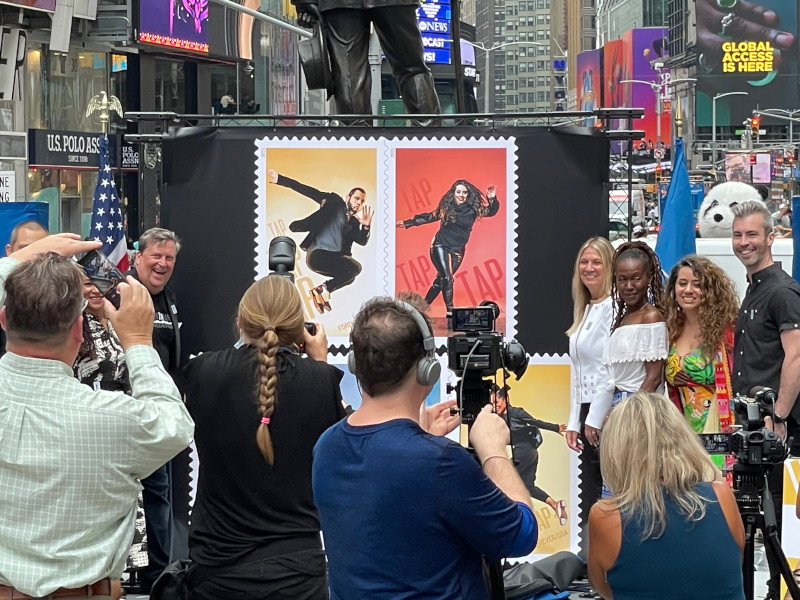
6. Tap it Out, the new five tap dance stamps. Photo by courtesy of Tony Waag.
American Tap Dance Foundation is also a place to study. In fact, you offer different possibilities to learn rhythm tap and I want to highlight your teaching program. What are the key points of the Tap Teacher Training Program?
«I think the TTT is possibly the most complicated program we have, in that it’s based on our own history and the legacy of the organization. The two co-directors Susan Hebach and Margaret Morrison are top notch teachers and historians. The material that we share with our students, the technique and choreography that we focus on, was personally handed down from Brenda and the legendary Copasetics. We owe it to them that this material is passed on yet again more precisely and with integrity. We own a lot to Brenda & the Copasetics. I owe my whole career to these people. I’m deeply indebted to them. I had the very good fortune of meeting Brenda, Honi, Bubba and Cookie straight out of high school and then I came to New York started working with them! This has been MY course now for about 40 years».
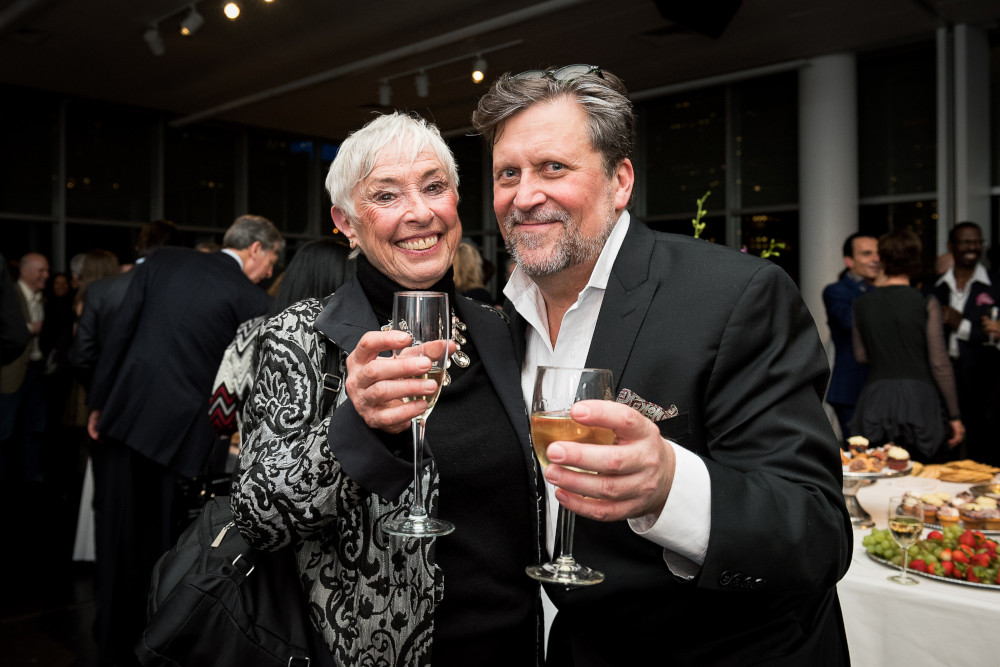
7. Tony and Brenda Bufalino. Photo by courtesy of Tony Waag, photographer Cherylynn Tsushima.
Tony Waag, you are not only a teacher and tap advocate. In 2009 you have created Thank You Gregory, a tribute to the memory of Gregory Hines. Any memories, about this show, you would like to share with us?
«It was the first big production I created, but produced by someone else that gave me complete control over the casting and the material to be presented, etc. It was a tribute to Greg, but also a real opportunity to showcase again, the variety inherent to the form. And Greg was all about that. He was our great ambassador of tap and this was my opportunity to THANK him for supporting the entire community and shining the light on tap dance».
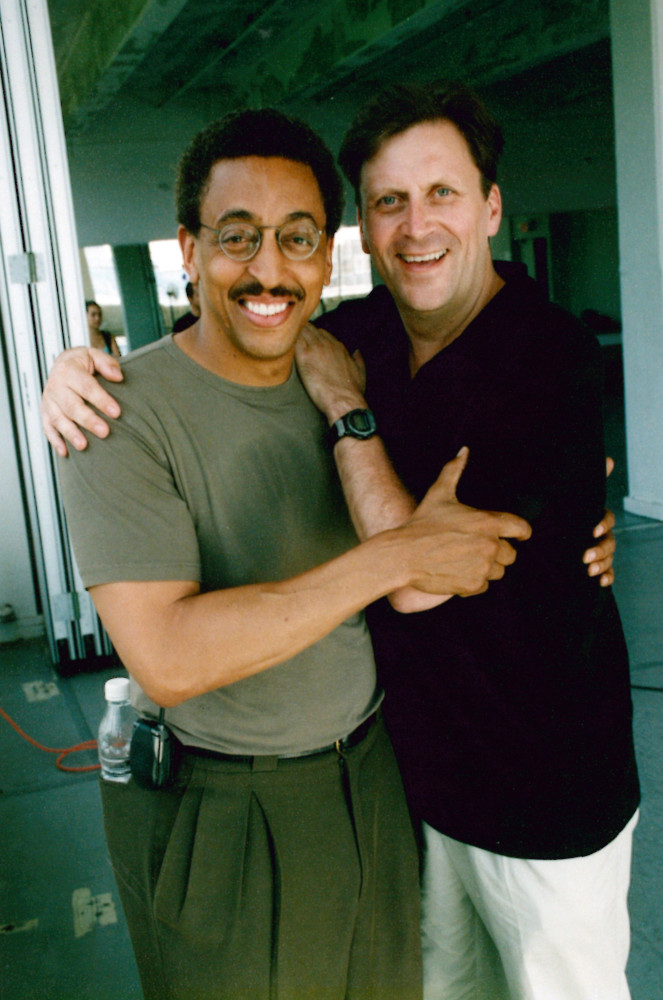
8. Tony and Gregory Hines. Photo by courtesy of Tony Waag.
During pandemic you have started Tony’s Tap Tv, a monthly collection of tap footage, tap steps and other material related to the style, which is now a live stream format with interviews, guest appearances and so on. How have you developed this format and how people have reacted to it? How is it possible, for people around the world, to watch it?
«It made me feel good to share so much material that hardly anyone ever saw in the first place. I had just finished organizing and then donating our archives to the Jerome Robbins Dance Division of the New York Public Library at the Lincoln Center, so I had access to all of the footage that I’ve been utilizing ever since. Again, everyone has been just very thankful that I’m sharing this material. I’m still struggling with the format. And I DO have one coming up on September 24 and it happens to be footage of Tap it Out and the Stamp Dedication ceremony we presented at Tap City in July».
Recently, tap festivals are all around the world. With internet we can virtually reach every part of the world and we can have access to videos and footage of the old masters. Thanks to organizations like ATDF, we are also focusing on tap history and the value of this art. How tap dancing is becoming more and more important and recognized as an Art form?
«For some reason younger people seem to be more interested now in the history of the form and I guess the Pandemic has provided some real time to slow down and look back a bit».
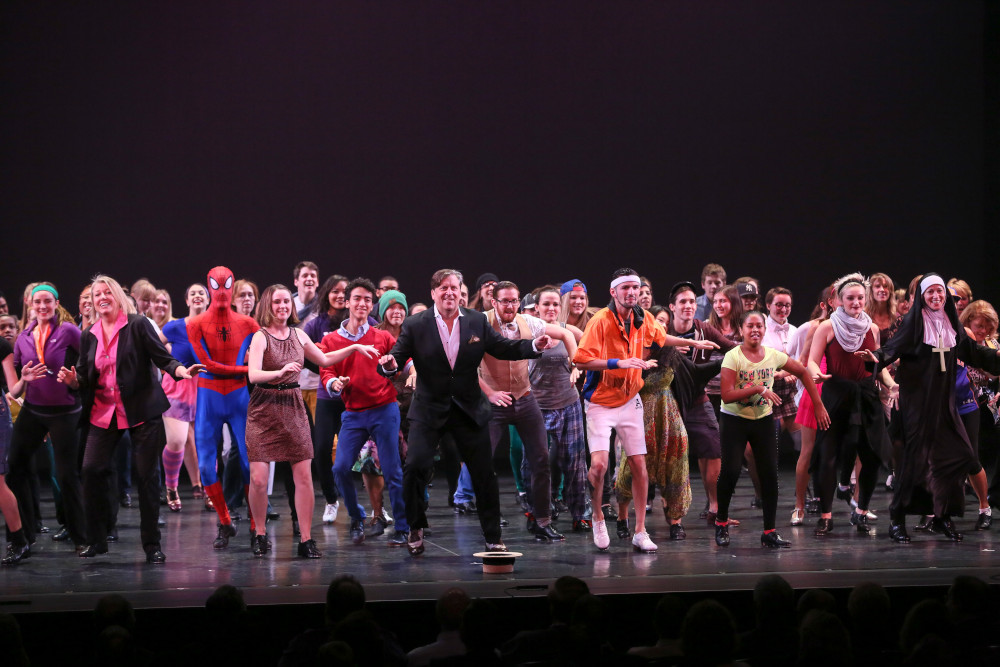
9. Photo by courtesy of Tony Waag, photographer Richard Termine.
Tony Waag, what do you suggest to students/dancer who wants to develop their musicality and sense of rhythm? Any advice for Italian Tap dancers?
«Well you said it. Listen to music, dance to it, or dare I say WITH it. Spend some time learning bar structures, different grooves, different tempos, different composers. It’s all right at our fingertips».
Where is going, in your opinion, Tap dancing today? How tap has changed compared to when you have started?
«I think it’s really opened up. It’s VERY international now. It’s being presented everywhere year-round. The general public knows more about it. We see more artists performing, presenting, teaching, TALKING, and they are producing more concerts that are being invited to larger stages and more prestigious venues».
Last but not least important, What are your plans for the future?
«Oh dear. Okay, I’m working on that Percussive Dance Center but I’m also working on a documentary or two. I’ve been sort of keeping that under my hat, but I might as well spill the beans now!».
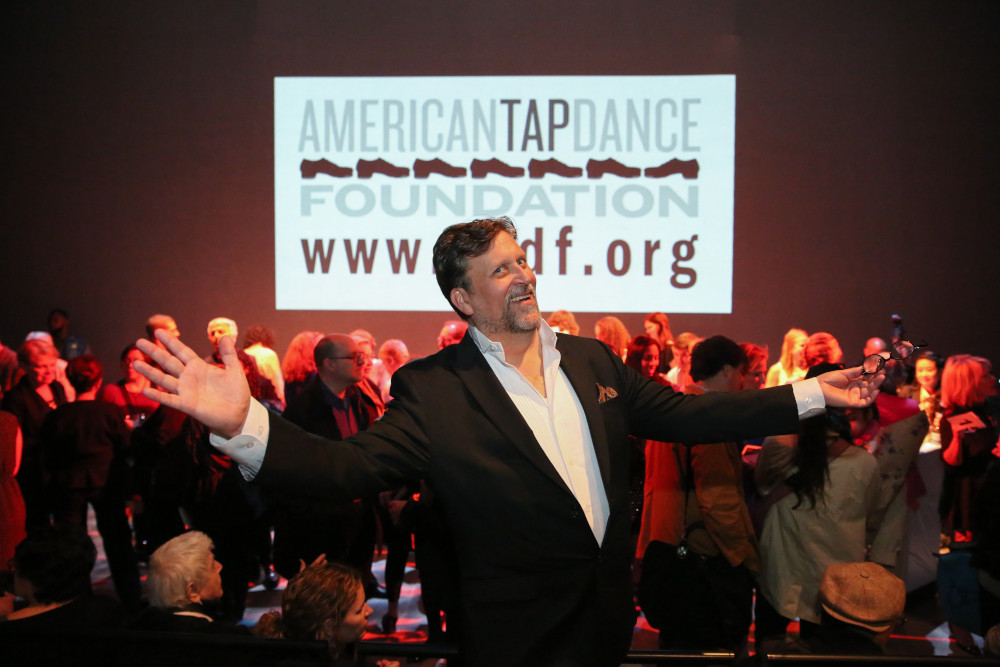
10. Photo by courtesy of Tony Waag, photographer Amanda Gentile.
We thank Tony Waag for his time.
For more information about his work, you can visit his official website, his Instagram profile and YouTube channel.
For more information about American Tap Dance Foundation, you can visit the official website.
Leggi l’intervista in Italiano qui.
- Hair an american Tribal love rock musical - 8 Aprile 2025
- Heather Cornell: la tap dance è musica, teatro e danza - 21 Gennaio 2024
- Heather Cornell: tap dance is music, theatre, and dance - 21 Gennaio 2024

